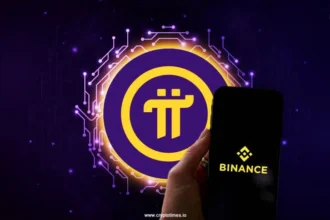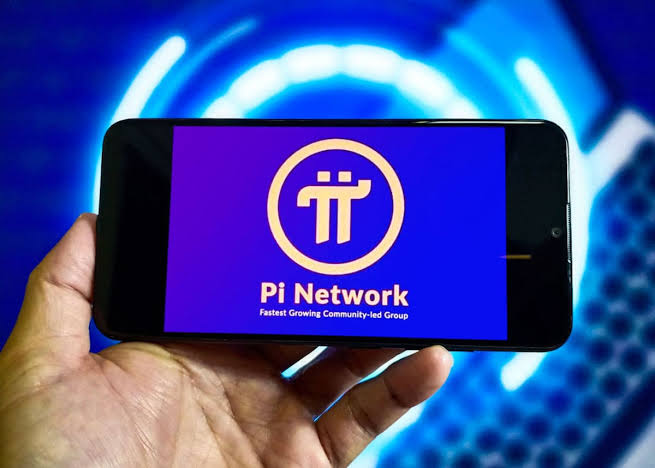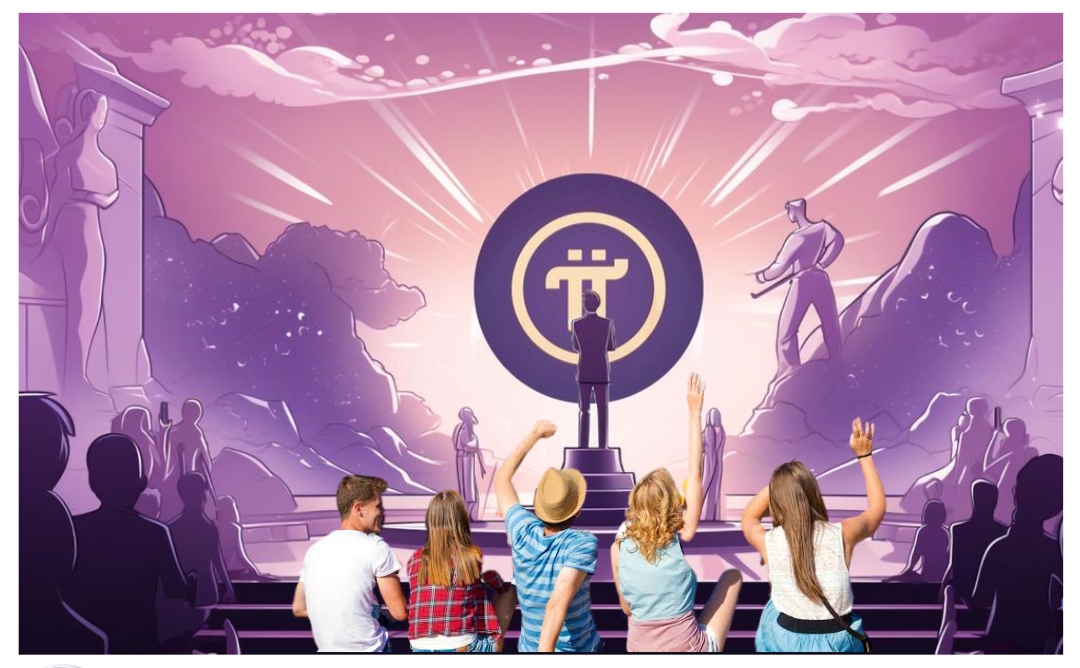Strap in folks, cause we’re taking a deep dive into the juicy details about Pi’s new mining rate change coming in May 2024. This adjustment is gonna shake things up for your earnings, so get ready. But that’s not all – we’ll also compare how Pi stacks up to Bitcoin’s recent “halving” event.
Bitcoin just went through its fourth halving, slicing mining rewards in half. This caused BTC’s value to skyrocket as supply got squeezed. Pi is using a similar tactic to control inflation and drive up value. By lowering the mining rate to 0.0055747 Pi per hour starting in May 2024, Pi becomes harder to get.
Sure, this means your daily earnings will drop to around 0.13 Pi. Over the whole month you’ll only get 4 Pi from basic mining. Annoying, right? But remember, this scarcity tactic worked for Bitcoin, so it could pay off big time for Pi once it hits the markets.
The core Pi team isn’t reducing rates just to frustrate us. They want to increase adoption and value the smart way. So try to keep an open mind. This could be the perfect formula to turn your Pi into a goldmine down the road.
Pi’s New Mining Rate Cut in May 2024
Pi Network cut mining rewards by nearly 75%
Starting in May 2024, the Pi Network team slashed the basic mining rate by nearly 75% to just 0.0055747 Pi per hour. At this new rate, you’ll earn only about 0.13 Pi per day and 4 Pi for the entire month by running the app and tapping the lightning bolt.
While this major cut in rewards may seem frustrating, try to keep an open mind. The goal is to control inflation and increase Pi’s value and adoption. The scarcer Pi becomes, the more valuable it could be once it hits exchanges. This strategy has worked for Bitcoin, whose value skyrocketed after its mining rewards were cut in half every four years.
How does Pi’s new mining rate compare to Bitcoin’s halving events?
Bitcoin goes through “halving” events every four years where mining rewards are cut in half. Bitcoin has had three halvings so far, the most recent in April 2024, reducing the block reward from 6.25 Bitcoin to 3.125 Bitcoin. Historically, Bitcoin’s price has surged after halvings as supply tightens.
Pi’s 75% mining reward cut in May 2024 could have a similar effect, driving up Pi’s value once it becomes exchangeable. While the Pi and Bitcoin networks are very different, they share the same goal of controlling supply to increase value. The Pi Core Team seems to be taking a page from Bitcoin’s playbook with this major mining rate adjustment.
The future looks bright if we’re patient
The new mining rate may sting in the short term, but try to focus on the bigger picture. The Pi Core Team is playing the long game to build real value and mainstream adoption for Pi. With our continued support, Pi could follow Bitcoin’s footsteps and become increasingly valuable and exchangeable over time. The future looks bright for Pi if we’re willing to be patient. Keep calm and mine on!
How the Mining Rate Change Impacts Your Pi Earnings
The new pi mining rate starting in May 2024 means you’ll be earning less pi per day from basic mining. Instead of the usual 0.25 pi, you’ll receive around 0.13 pi daily. Over the month, that pans out to only 4 pi from mining compared to the typical 7-8 pi.
Why Lower the Mining Rate?
While a lower mining rate may seem frustrating, the goal is to increase scarcity and push up pi’s value. The harder pi is to get, the more people may want it, especially once pi hits exchanges. This worked for Bitcoin – after each “halving event” where mining rewards dropped by half, Bitcoin’s price skyrocketed.
Comparing Pi and Bitcoin Mining
Bitcoin goes through halving events every four years where mining rewards decrease by 50%. Bitcoin just had its fourth halving in April 2024, with miners now getting 2.125 BTC per block instead of 6.25 BTC. Past halvings led to price surges as supply tightened.
The Upside: Higher Pi Value
Though you’ll earn less pi from mining, lower supply and higher demand could significantly increase pi’s value. Your pi holdings may be worth more, and once pi is exchangeable, you can trade some for other currencies. The core team’s goal is making pi valuable and useful, not maximizing how much pi you can earn.
While a lower mining rate may be disappointing short-term, try looking at the bigger picture. Pi’s success depends on managing supply and demand to establish real value. Your smaller pi earnings could be worth a lot more in the future if everything goes according to plan. The potential benefits to you and the network far outweigh the temporary downside of a mining rate cut. Stay patient and keep the faith in pi!
Comparing Pi’s Situation to Bitcoin’s Recent Halving
###Pi’s mining rate cut Starting this May 2024, Pi’s basic mining rate has dropped again to just 0.0055747 Pi per hour. This works out to earning only about 0.13 Pi per day or 4 Pi for the entire month by running the app and tapping the lightning bolt.
While frustrating, this mining rate reduction by the Pi core team actually makes a lot of sense if you think about it. The goal is to control inflation and make Pi more scarce and valuable. The harder Pi is to obtain, the more its value could rise once it starts trading on exchanges, similar to what happened with Bitcoin.
Bitcoin’s Supply Squeeze
Bitcoin goes through an event called the halving every four years where the mining reward is cut in half. The fourth halving just happened last month in April 2024, reducing the reward from 6.25 Bitcoin per block to 2.125 Bitcoin. Past halvings have led to surges in Bitcoin’s price as supply tightens.
Comparing the Two Crypto Assets
So how does Pi’s situation compare to Bitcoin’s recent halving? There are some similarities and differences:
- Both Pi and Bitcoin are reducing their mining rewards to control supply, which could drive up their value. The lower the mining rate and steeper the cut, the greater the supply squeeze.
- However, Bitcoin’s halving is a pre-programmed event that occurs automatically every four years. Pi’s mining rate changes are made manually by the development team based on certain criteria. The changes may be more frequent and variable.
- Bitcoin is already established as a mainstream cryptocurrency, so its halving events have a proven track record of positively impacting its price. Pi is still in development, so we have yet to see how its mining rate cuts will affect its value once trading begins.
- Pi’s mining rate reduction is more drastic at over 90% compared to Bitcoin’s 50% cut. This could indicate Pi’s team wants to constrain supply even more aggressively, which may bode well for its value in the long run. However, it also means earning Pi will be slower going forward.
In summary, while different in nature, the mining rate and reward changes to both Pi and Bitcoin are part of crucial strategies to build value. The coming years will reveal how these supply squeezes help establish Pi as a contender in the crypto space, just as they have for Bitcoin. The future looks bright if we continue mining, spreading the word, and supporting these visionary digital assets. Let the crypto revolution continue!
Bitcoin Mining Rewards Slashed in Half Again
It seems like only yesterday bitcoin went through its last halving event, but here we are in May 2024 and bitcoin mining rewards have been cut in half once again. As of this month, bitcoin miners now receive only 2.125 bitcoin for each block they successfully mine, down from 6.25. These regular halving events are built into bitcoin’s code to control new supply and have historically caused bitcoin’s price to surge.
How does this compare to Pi’s mining rate change?
Pi works a bit differently. Instead of programmed halving events, the Pi Core Team manually adjusts Pi’s mining rate based on the network’s needs and to match Pi’s value in real-world markets. The recent decrease of Pi’s mining rate to 0.0055747 Pi per hour is meant to make Pi scarcer and potentially more valuable, similar to how bitcoin’s halving events have impacted its price.
Why the reduction?
While a lower mining rate may seem frustrating, try to see the bigger picture. The goal is to curb inflation and increase Pi’s real-world utility and value. The harder Pi is to obtain, the more valuable it may become, especially once it’s available for exchange on crypto markets. Bitcoin’s value skyrocketed after each halving, so a lower Pi mining rate could have a similar effect on Pi’s value in the future.
What does this mean for your Pi earnings?
With the reduced mining rate, you’ll earn around 0.13 Pi per day by tapping the lightning bolt, amounting to around 4 Pi for the entire month of May. Quite a bit less than we’re used to, but necessary to secure Pi’s long term success. Your Pi earnings may decrease in the short term, but if the new scarcity causes Pi’s value to rise substantially, the Pi you do earn could ultimately be worth much more.
The changes to bitcoin’s and Pi’s mining rates show how important managing supply is to the success of cryptocurrencies. While the short term rewards may decrease, the long term benefits to value and adoption can be huge. Stay patient and keep tapping – the future is bright for Pi!
Pi vs Bitcoin in 2024: Which Crypto Will Come Out on Top?
Starting in May 2024, Pi’s basic mining rate will drop to 0.0055747 Pi per hour. That works out to only around 0.13 Pi earned per day for running the app and tapping the lightning bolt. Over the whole month you’ll earn about 4 Pi from mining.
While this may be frustrating, remember that the goal is controlling inflation and increasing Pi’s value. The less Pi available, the more valuable it may become. Like Bitcoin, Pi’s value could skyrocket after the mining rewards decrease.
How does Pi’s mining compare to Bitcoin’s halving events?
Bitcoin goes through “halving” events every four years where the mining rewards are cut in half. Bitcoin has had three halvings so far. The fourth halving was in April 2024, reducing the reward from 12.5 BTC per block to 6.25 BTC. Past halvings have led to surges in Bitcoin’s price as supply tightens.
The future of Pi and Bitcoin
After their 2024 changes, both Pi and Bitcoin may become more scarce and valuable. Pi likely still has a way to go before becoming exchangeable like Bitcoin, but controlling inflation through mining rate changes is a step in the right direction.
While no one knows for sure how these cryptos will perform, their 2024 adjustments aim for long term sustainability. If you’re invested in either crypto, the best approach is holding for the long run. Both Pi and Bitcoin could emerge as winners if they achieve mainstream adoption, so keep mining and hodling!
The mining rate changes in 2024 will make Pi and Bitcoin harder to earn, but that increased difficulty and scarcity may lead to greater rewards. The future of cryptocurrency is uncertain, but Pi and Bitcoin seem positioned to stand the test of time. Stay up to date on the latest crypto news and keep your apps running – you never know which crypto will come out on top!
Conclusion
So there you have it. With the latest changes to pi’s mining rate starting in May 2024, we’ll be earning pi at a slower rate than ever before. Just 4 pi per month from basic mining alone. At first glance this seems frustrating, but try to keep an open mind. The goal is to control inflation and increase pi’s value over the long run. The more scarce pi becomes, the higher its price could climb if demand stays strong.
Pi’s situation isn’t unique either. Bitcoin just underwent its fourth “halving” event, cutting the mining reward in half. Past bitcoin halvings have preceded huge bull runs. While direct comparisons between pi and bitcoin are tough to make, the principles of digital scarcity fueling value are the same.
One thing is clear – the pi mining rate changes coming in 2024 mark a new chapter for the project. It’ll be interesting to see how the pi community responds. Will you keep mining pi daily despite the reduced rate? Share your thoughts below! Continue Reading

















I am sending you 1π! Pi is a new digital currency developed by Stanford PhDs, with over 55 million members worldwide. To claim your Pi, follow this link https://minepi.com/dreamtreats and use my username (dreamtreats) as your invitation code.